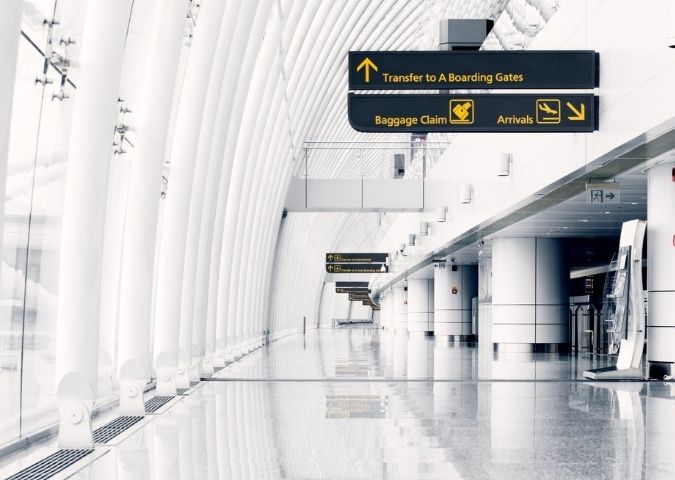Myanmar
For a trip to Myanmar, you need a valid visa. Which type is suitable for your travel plans and whether you can also enter Myanmar with an E-Visa depends on a number of factors. We support you in applying for your electronic travel authorization (eVisa) for Myanmar.
Country facts
Are you planning a vacation in Myanmar? Then look forward to tropical islands, ancient temples, and breathtaking views. But before you dive into Burma's culture, let us give you some essential advice for your Myanmar trip.
Quick facts Myanmar
- Location: Southeast Asia
- Area: 676,578 km²
- Currency: Kyat (MMK)
- Official language: Burmese
- Population: approx. 54.0 million
- Capital city: Naypyidaw
Climate in Myanmar
Most of Myanmar is under monsoon influence and has a tropical climate but with different characteristics depending on the area.
June to October is the rainy season in Myanmar, and the dry season from November to May is divided into two phases: December to March are moderately warm, and the hot season lasts from March to May. On hot days, you can expect temperatures between 30 °C and 40 °C.
Landscape and nature in Myanmar
Myanmar's landscape features mountains, marshlands, highland plains, rivers, and many forests. There are also numerous islands off the coast, some of which consist of untouched nature.
In the mountains and on the coasts, you will find tropical rainforests, and along the rivers, there are many mangroves. Bambus and palm trees are also ubiquitous in Myanmar. The wildlife includes elephants, big cats, rhinos, monkeys, and bears.
Entering Myanmar
For a trip to Myanmar, you need an eVisa or visa. Also, check the current entry requirements for Myanmar before you travel.
Getting around in Myanmar
In Myanmar, the best way to get around is by car. However, be prepared for bad road conditions and the unpredictable behavior of other road users.
You also have access to a domestic air network and train and bus connections. However, safety standards are lower than in Europe, for example, due to outdated aircraft and vehicles.
Means of payment in Myanmar
In Myanmar, you can pay with credit cards in an increasing number of places, but sometimes high fees apply. With cash, you will get through your Myanmar vacation much better.
To be on the safe side, always carry US Dollars with you, as you will be asked for them when making certain payments. The network of ATMs in Myanmar is often overloaded, so plan your trip well and stock up on cash.
Travel and safety tips for Myanmar
Since the local security situation can change spontaneously, keep up to date with current events and forecasts during your trip with the help of news and weather reports.
Health information for Myanmar
In general, there are no mandatory vaccinations for Myanmar travelers. The only exception is if you are entering from a country that is currently designated as a yellow fever area by the WHO. In this case, you must provide proof of yellow fever vaccination.
The following travel vaccinations are recommended for Myanmar:
- Hepatitis A
- Hepatitis B
- Dengue fever
- Rabies
- Typhoid fever
- Japanese encephalitis
Temples and pagodas in Myanmar
Pagodas, temples, Buddha statues: Myanmar is absolutely littered with golden structures, which is why it is appropriately nicknamed "the Golden Country." Nowhere is this more evident than at the Shwedagon Pagoda in Yangon. The country's most important Buddhist shrine is completely covered in gold leaf, and its spire is adorned with diamonds and other precious stones.
Another architectural highlight is the Bagan Archaeological Zone, a huge temple complex consisting of some 2500 temples, monasteries, and pagodas, most of which were built between the 10th and 14th centuries. The city of Yangon is also well worth a visit. With the Kuthodaw Pagoda, the Mahamuni Pagoda, and the Shwenandaw Monastery, several breathtaking buildings are waiting here that absolutely belong on the travel list of Myanmar vacationers.
Culinary highlights in Myanmar
A Burmese meal is a true culinary adventure, encompassing sour, salty, and spicy dishes alike. Typically, a meal consists of not just one particular dish, but a collection of several small bowls filled with rice, noodles, curries, fish dishes, bread, soups, salads, vegetables, fruits, pastes, or dips. For the small hunger in between, an excursion into the world of Burmese street food is highly recommended. The traditional snacks, called "Mont," include a variety of savory to sweet dishes that are deep-fried, steamed, baked, or fried.

